Vasant Shinde
IT Is a well-known fact that the Haṛappan civilization that flourished in major part of the north-west Indian subcontinent between 2600 BCE to 1900 BCE (Shinde 2016) laid the foundation of modern India. Most of the Indian traditions and basic knowledge system were introduced in the Indian subcontinent around 7000 BCE. The technology of the basic sciences and crafts gradually grew from the beginning of settled life around 7000 BCE and perfected during the Haṛappan civilization period around 2600 BCE (Shinde 2018). The Haṛappan culture began in the middle of the sixth millennium BCE and continued to flourish till the middle of the third millennium BCE.
The early part of the culture is termed as Early Haṛappan that spanned from 5500 BCE to 2600 BCE and is considered the formative stage of the Haṛappan civilization. The evidences from the excavated sites in the Ghaggar basin (Sarasvatī) and the Indus/Baluchistan region clearly indicate their gradual growth, which is reflected in their structures and technological advancement. The Haṛappans began to live in small rectangular or square-shaped structures of mud or in the complexes formed of pit dwellings. There is an evident shift from pit dwelling to over-the-ground rectangular structures of mud or mud bricks. Sizes of the structure seem to increase and small complexes begin to appear, indicating the growth in architectural activities. This development ultimately transformed into a full-fledged urban phase in around 2600 BCE. Similar evidence of gradual growth are observed in various crafts that they began to manufacture. The ceramic that was crude and handmade in the early stage was progressively refined and fully developed in the urban phase (Shinde 2016).
The traditions introduced, and basic technologies and sciences perfected by the Haṛappan civilization around 2600 BCE have continued until today.
The survival of the traditions and knowledge can also be explained. After the decline of the Haṛappan civilization due to changing climatic conditions, its inhabitants dispersed in all directions in small groups. The periphery area was already occupied by the people of the contemporary Neolithic/ Chalcolithic communities. The Haṛappans probably got mixed with them and kept alive the Haṛappan traditions and Indian knowledge system. It is evident that the Haṛappans introduced chicken tandoor, the favourite dish of Punjab today. The modern people of Punjab and Haryana have similar layouts to their towns and villages as the Haṛappans. A classic example of the continuation of Haṛappan settlement pattern is the large village of Rākhīgaṛhī, where the largest Haṛappan city is located. During the course of excavation, the team of subject experts and students make encampments for three to four months in a village. Sometimes while moving in the village, one gets the feeling that they are moving around the Haṛappan village. The arrangement of the roads, houses and other structures in the modern settlement is exactly similar to the one introduced by the Haṛappans, thus, suggesting a continuity. Even the general plan of a modern house, with an open courtyard and rooms around, is a carbon copy of a Haṛappan house. However, we are not yet efficient enough as the Haṛappans were in maintaining the sanitation of our settlements. The sewage pattern of the Haṛappans was underground and without any leakages. The modern drainage in many settlements is usually left open and unattended, inviting health hazards.
To fight the extreme climate changes, the Haṛappans in the Sarasvatī basin devised such houses that remained cozy in all seasons. The plan of the house included an open courtyard and rooms on all sides. Such a plan enables enough ventilation and light to enter the rooms. The houses were intentionally constructed with thick walls made of mud and mud bricks, which could keep a house warm in winter and cool in summer. The Haṛappans could have easily built walls of burnt bricks but avoided such construction in the Sarasvatī basin due to climatic reasons. The modern houses based on the Haṛappan plan still use this concept. However, nowadays people have switched over to concrete and burnt-brick structures, which are scientifically not ideal and do not provide relief from extreme climatic conditions in the region.

Plan of the modern village at Rākhīgaṛhī. Note that the drainage is choked and spread in the street
The excavations at Kālībaṅgan provided evidence of the advanced ploughing methods for agriculture used by the Haṛappans (Lal 1979). The ploughed field reported belonged to the Early Haṛappan phase, dated to around 2900 BCE, which is the only evidence of its kind. There are east–west and north–south running furrow marks, of which the east–west ones are closer to each other and could have been used for growing the main crops like wheat or barley. The north–south furrow marks are slightly apart from each other and could have been meant for cultivating secondary crops like mustard or horse gram along with the main crop (see Pl. 13.3). This method of ploughing and crop pattern has yet not changed in this part of the subcontinent.

Thick mud-brick walls of the Haṛappan structures at Farmānā
The Haṛappan sites of Moheṅjo-Daṛo and Banawālī have yielded the evidence of agricultural tools in the form of their replicas. The terracotta replica of a plough found at Banawālī has an angled cutting edge. The shape of the modern plough is typically the same as the Haṛappans, the only difference being that the modern plough is fitted with an iron ploughshare.

Haṛappan ploughed field

Modern ploughed field (courtesy: ASI)
The Haṛappan sites of Moheṅjo-Daṛo and Banawālī have yielded the evidence of agricultural tools in the form of their replicas. The terracotta replica of a plough found at Banawālī has an angled cutting edge. The shape of the modern plough is typically the same as the Haṛappans, the only difference being that the modern plough is fitted with an iron ploughshare.

Terracotta replica of Haṛappan

It is also observed that the food habits of the modern-day people in the north-west India have not changed since the Haṛappan times as the shape of the pots have remained the same though, the medium has changed from earthen to metal now to some extent. One of the most popular delicacies of north-west India is chicken tandoor, the origin of which lies in the Haṛappan period. The evidence of the Haṛappan tandoor (oven) comes from the excavations at Farmānā (Shinde et al. 2011a). The legacy of the Haṛappan tandoor has survived in major parts of north-western India without major modifications.
Numerous potters in South Asia, subsisting on pottery, use the same techniques for manufacturing, painting and baking pottery as the Haṛappans. Their entire process of the manufacturing is age-old. The men turn the pottery on wheels and bake them, whereas the women take part in painting and polishing them. The pottery is made for trade and for barter with the villagers, who pay them in kind.
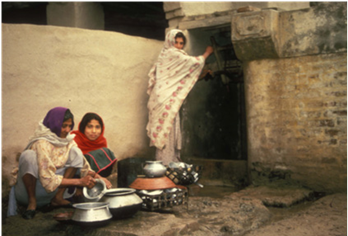
Shapes of the modern metal pots are exactly similar to the Haṛappan pots
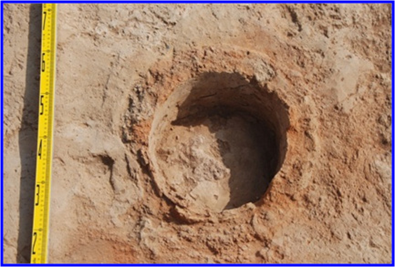
Haṛappan tandoor, Farmānā
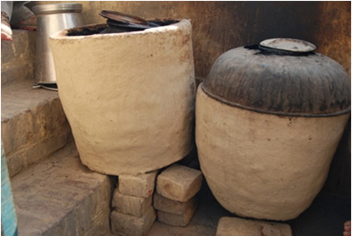
Modern tandoor
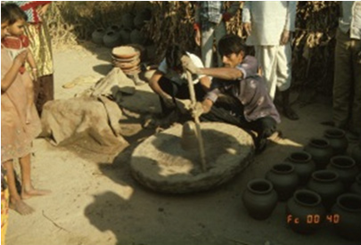
Potters use the wheel for the manufacture of pottery
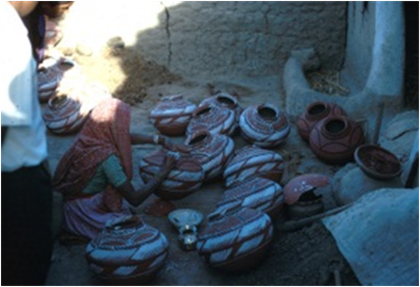
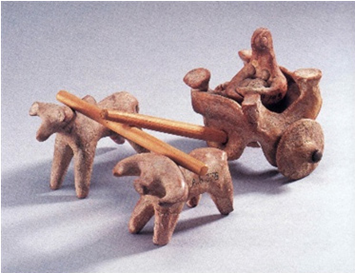
Modern painting style similar to the ancient
The people of South Asia have inherited many traditions introduced by the Haṛappans in the distant past. Even today we are using the same kind of bullock carts and boats made of wooden planks and reeds for carrying out trade with the Gulf regions as our ancestors did 5,000 years ago. The bullock carts were used for linking hinterland villages, whereas the ships were used for riverine and international sea trade.
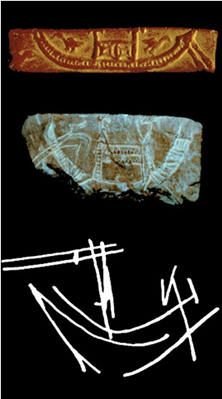
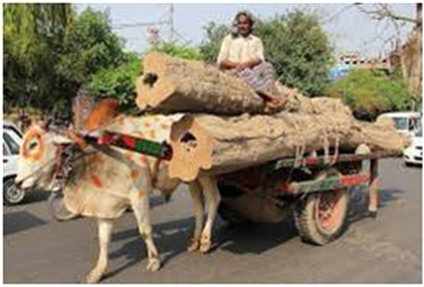
Modern bullock cart
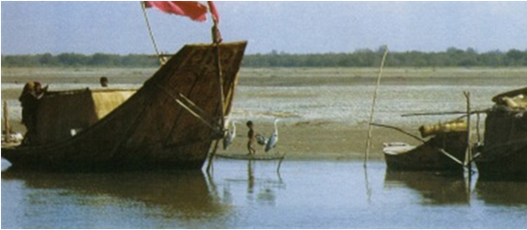
Modern wooden flat-bottomed plank boat similar to the Haṛappan one
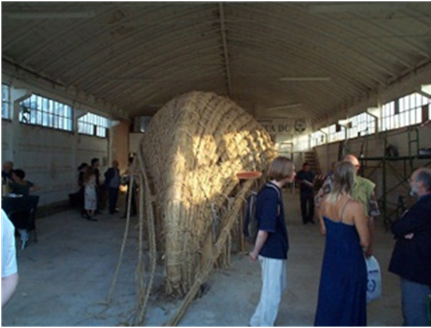
Modern reed boat is built possibly by using the same technique
There are a few lapidaries in the Khambat region of Gujarat whose main occupation is to produce Haṛappan type stone (carnelian, agate and jasper) beads by using the same Haṛappan technology. The entire process ranging from acquiring raw materials to final polishing and perforation is done by using the traditional methods developed 5,000 years ago. The beads made by the present craftsmen are traded with far away regions like Nagaland and also in the international market.
There are numerous examples of the surviving Haṛappan legacy. They Craftsman from Khambat in Gujarat in the process of selecting suitable raw material for the manufacture of stone beads. They use the same technology for manufacture as the Haṛappans did.
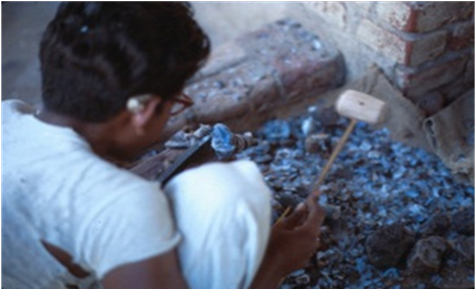
Craftsman from Khambat in Gujarat in the process of selecting suitable raw material for the manufacture of stone beads. They use the same technology for manufacture as the Haṛappans did
The Haṛappan dancing girl found at Moheṅjo-Daṛo is wearing a set of spiralled bangles on the upper left arm. These type of bangles were found in the Early Haṛappan levels at Kuṇāl, dated to around 3000 BCE. Such ornaments continue to be manufactured and worn by the womenfolk in Rajasthan and Gujarat (Lal 2002: 87) pointing towards a continuity of the Haṛappan tradition.
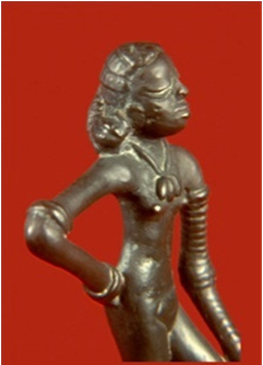
Dancing girl shown wearing spiral bangles all over the left hand
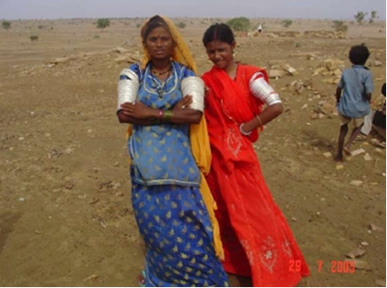
Haṛappan tradition of wearing bangles on one hand continues in parts of western India even today
It seems that the Haṛappan children played with rattles, whistles, tops, hopscotch discs and must have enjoyed wearing masks. The children from many villages still use similar terracotta and stone objects to play.
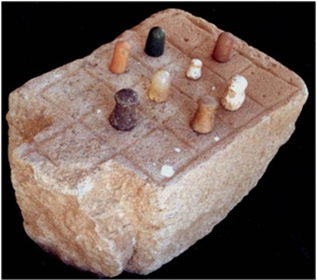
The Haṛappan adults must have enjoyed some intelligent games like chess, as suggested by Rao (1985: 503) based on the occurrence of gamesmen from Lothal. The concept of chess, so popular all over the world, seems to have its origin in the Haṛappan period, the tradition of which still continues
There Genesis of chess game lies in the Haṛappan period are numerous examples of the surviving Haappan legacy. They include instances like that of pet animals such as dogs with a collar around their neck (see Pl. 13.21), birds in a cage, feeding bottles (see Pl. 13.22), circular platforms for thrashing grains, net sinkers, models of cots with four legs, windows, etc. The concept of the feeding bottle is Indian and not Western as is believed by many

Terracotta figurine of a collared pet dog, Rākhīgaṛhī
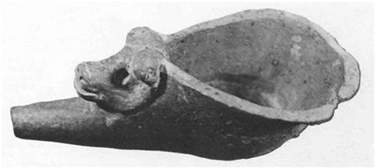
Terracotta model of feeding bottle, Kālībaṅgan
One of the most important contributions of the Haṛappans to the world is the introduction of Yoga and meditation sciences, which provides immense health benefits. Both the classical sites of Haṛappā and Moheṅjo-Daṛo have yielded terracotta human figurines in different Yogic posture (āsanas) (see Pl. 13.23) and also the limestone statue of the so-called Priest King (see Pl. 13.24) in dhyāna-mudrā (meditation pose). The whole world has realized the health benefits of yoga and meditation and, therefore, they are practised by many as a part of their daily routine
The Yoga tradition is considered to be India’s gift to the world, which was introduced by the Haṛappans almost 5,000 years ago. Haṛappan terracotta figurines in different āsanas. Excavations in the Early Haṛappan levels at Nausharo dated between 2800 and 2600 BCE have yielded a terracotta female figurine, painted with three different colours; the body is in usual terracotta, the ornaments in yellow, hair in black with some application of red. The use of yellow on ornaments clearly suggests that the Haṛappans made gold jewellery. The application of red to the medial parting line of the hair clearly represents vermillion (sindūra). The practice of putting vermillion in the hair parting has deep roots in the cultural milieu. The married Hindu women follow this practice widely today. It is often said that tradition dies hard. This is especially true when it is related to the womenfolk, as they have always been the bulwark of cultural continuity in the society (Lal 2002: 83).
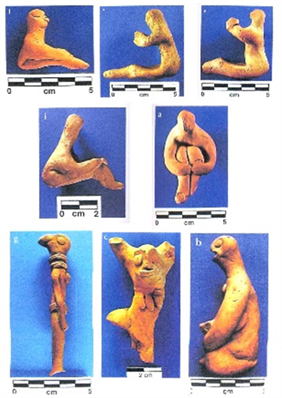
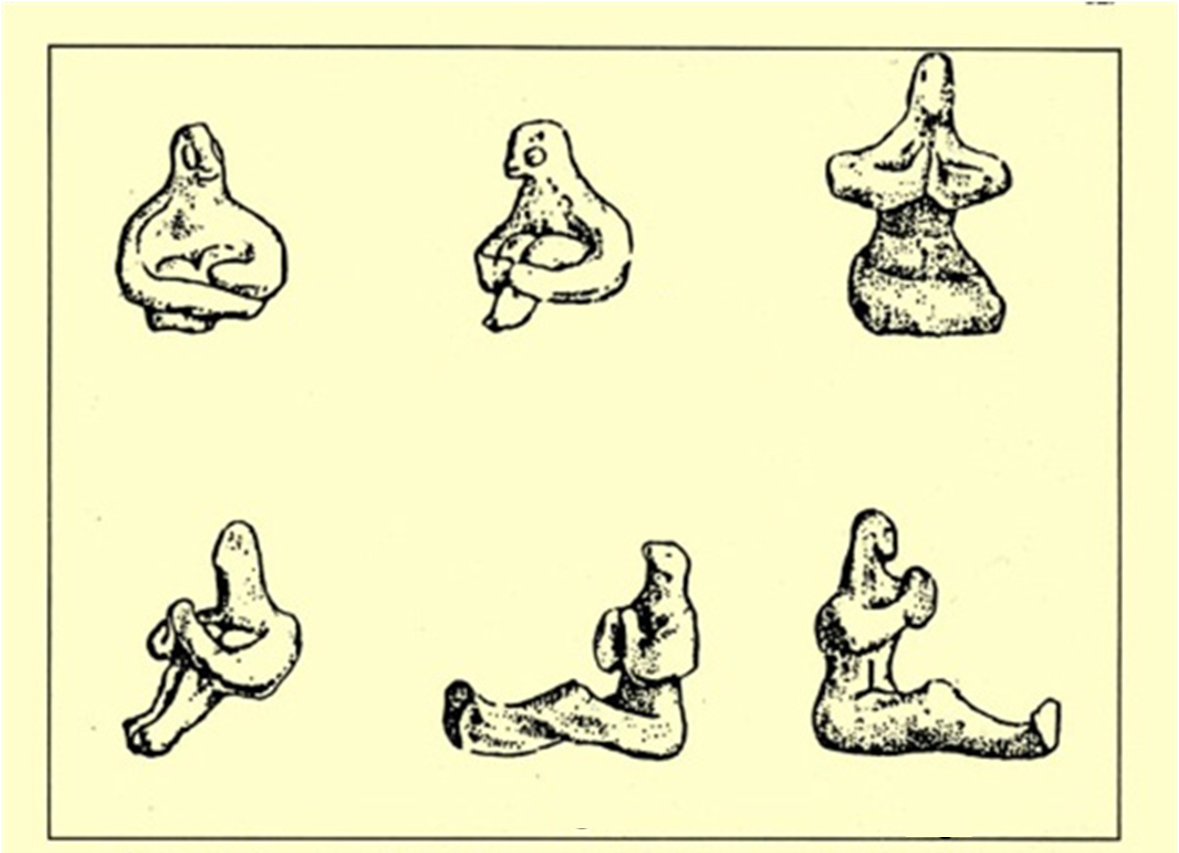
Excavations in the Early Haṛappan levels at Nausharo dated between 2800 and 2600 BCE have yielded a terracotta female figurine, painted with three different colours; the body is in usual terracotta, the ornaments in yellow, hair in black with some application of red. The use of yellow on ornaments clearly suggests that the Haṛappans made gold jewellery. The application of red to the medial parting line of the hair clearly represents
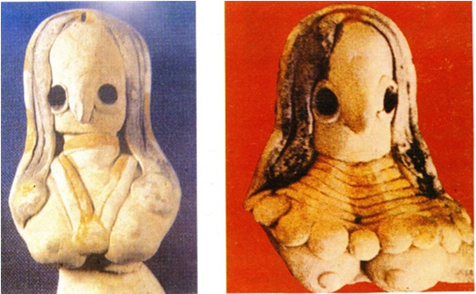
vermillion (sindūra) (Pl. 13.27).
The practice of putting vermillion in the hair parting has deep roots in the cultural milieu. The married Hindu women follow this practice widely today. It is often said that tradition dies hard. This is especially true when it is related to the womenfolk, as they have always been the bulwark of cultural continuity in the society (Lal 2002: 83).
Placing vermillion in parted hair, this tradition was introduced during the Haṛappan times and remains an important tradition among married Hindu women today (after Lal 2002)
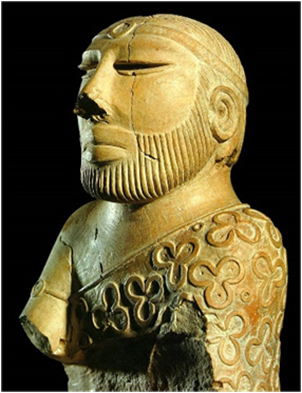
Ha appan Priest King shown in pose meditation
It is interesting to state that the practice of namaste (greeting with folded hands) goes back to the Haṛappan times. The excavations at Haṛappā have yielded terracotta figurines in a greeting posture. Many Indians usually greet each other with folded hands (namaste) today and it is believed that this tradition has come down from the Haṛappan times.
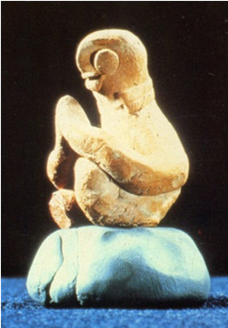
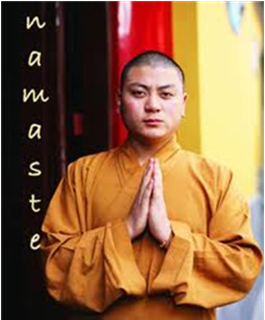
Namaste is the Indian
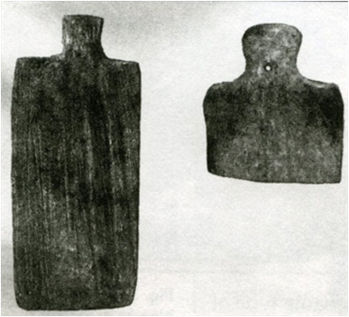
Haṛappan slates, the earliest evidence of its kind. This tradition still continues in the Indian subcontinent
(after Mackey 1938)
According to Mackey, terracotta objects and writing tablets have been unearthed from the excavations at Moheṅjo-Daṛo. There are two rectangular objects, one of which is broken, the former measuring 18 ´ 8 cm. Both have small rectangular projections, and one even has a hole pierced through this projection. Mackey (1938: 430) claims: “The use of these two objects is as yet uncertain, but I suggest that they were writing tablets.” This is the earliest evidence of its kind anywhere in the world. Similar evidence has been recorded from some of the northern Indian sites from the Early Historic period. This tradition initiated by the Haṛappans has continued through Early Historic until the modern times.
After the decline of the Haṛappan culture around 1900 BCE, the Haṛappan people dispersed in all directions and got mixed with their contemporaries. They continued the Haṛappan traditions and knowledge system. These have been continued till the present and the knowledge may have been handed down from generation to generation thought oral tradition, which is very strong in this part of the world. We are thus still living in the Haṛappan traditions.

